Archive | Regional cooperation and integration RSS feed for this section
Industry and trade, Regional cooperation and integration
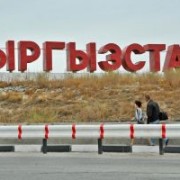 Energy, Regional cooperation and integration
Energy, Regional cooperation and integration
 Regional cooperation and integration
Regional cooperation and integration
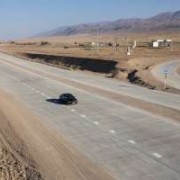 Education, Regional cooperation and integration
Education, Regional cooperation and integration
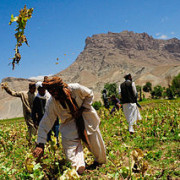 Regional cooperation and integration
Regional cooperation and integration
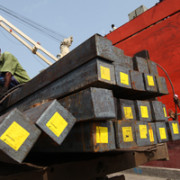 Industry and trade, Regional cooperation and integration
Industry and trade, Regional cooperation and integration
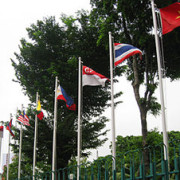 Regional cooperation and integration
Regional cooperation and integration
 Regional cooperation and integration
Regional cooperation and integration
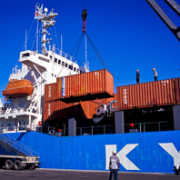 Regional cooperation and integration
Regional cooperation and integration
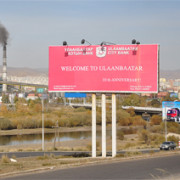 Regional cooperation and integration
Regional cooperation and integration
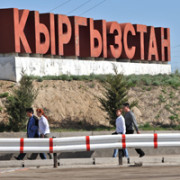
A snapshot of e-commerce in Central Asia

In 2015, Central Asia made some important improvements in the environment for cross-border e-commerce: Kazakhstan's accession to the World Trade Organization (WTO) will boost commercial transparency, while the Kyrgyz Republic’s membership in the Eurasian Customs Union expands its consumer base. Why e-commerce? Two reasons. First, e-commerce reduces the cost of distance. Central Asia is the highest trade cost region in the world: vast distances from major markets make finding buyers challenging, shipping goods slow, and export prices high. Second, e-commerce can help pull in populations that are traditionally under-represented in export markets such as women, small businesses and rural entrepreneurs.
TAPI pipeline: Inching from dreams to reality

The Turkmenistan–Afghanistan–Pakistan–India (TAPI) gas pipeline project was first conceived in October 1997 by Central Asia Gas Pipeline Limited (CentGas). Almost 18 years later, the pipeline—often dubbed as the “on/off pipeline,” the “pipeline dream,” and the “peace pipeline”—although still on the drawing board is inching closer to reality.
Mega-regional infrastructure initiatives – Asia’s new noodle bowl?

One of the striking lessons from Asia’s success over the past few decades is that it makes economic sense to invest in regional infrastructure to link two or more countries to support outward-oriented development strategies.
Scholars, policymakers, and international affairs: Finding common cause

Any attempt to bridge the divide between scholars and policy-makers in international affairs is so welcome that I couldn’t help but applaud this book. The sad truth, however, is that after reading it I am even more convinced that the divide is a chasm.
Potential gains from closer cooperation between South Asia and Southeast Asia

South Asian and Southeast Asian economies have all embraced an outward-oriented development strategy, albeit to different degrees. The result has been an impressive increase in international trade, foreign direct investment (FDI) inflows, and significant productivity improvements, which in turn have contributed to important socio-economic gains. Indeed, some of these economies have delivered among the most striking economic performances in the world.
AEC is due—but what about institutions?

A pressing policy question facing Association of Southeast Asian Nations (ASEAN) leaders at their summit in April 2015 and beyond is whether the ASEAN Economic Community (AEC) can be sustained without more effective institutions. This article explores the link between achieving the AEC agenda and institutional effectiveness. To remedy the implementation gridlock, it proposes reforms to the leadership and the technical level of ASEAN bodies, prioritization of new institutions, an effective monitoring mechanism, and an empowered ASEAN Secretariat.
Myanmar in transition: economic development and shifts in foreign aid from East Asia

One of the pillars of Myanmar’s democratic transition is its capacity to foster economic development through foreign investments. However, a huge infrastructure deficit combined with electricity shortages are serious concerns for foreign companies willing to operate in this promising new market. As Asia’s second poorest country, Myanmar’s leaders need a reliable foreign investor who has both the financial capabilities and the industrial skills to cope with the challenge. This partner is Japan.
Pacific economies: Leveraging the benefits of East Asian and Southeast Asian growth

With the center of global economic activity shifting rapidly from the United States and Europe toward Asia, opportunities are being generated for the Pacific developing member countries (DMCs) of the Asian Development Bank (ADB) to benefit from increasing economic interdependence with Asia. Economic transmission channels are (i) trade in goods; (ii) trade in services, in particular tourism; (iii) finance and foreign direct investment; (iv) labor and remittance flows; and (v) aid.
Development via regional integration – Mongolia’s chance for a prosperous future

Regional integration offers Mongolia the opportunity for a more prosperous future. But the country has lagged in this effort, which is surprising given its geographical location where bold integration initiatives have been launched, such as the People’s Republic of China’s (PRC) “Silk Road Initiative,” and where economic alliances have been strengthened under Central Asia Regional Economic Cooperation (CAREC) and Shanghai Organisation for Cooperation (SCO).
Is regional economic integration in Central Asia a doomed vision or a promising future?

Central Asia has for centuries been seen as a neglected Russian “backyard,” but international interest in the region has increased over the last two decades because of its vast stores of energy and natural resources. But to achieve a brighter future the region must pursue economic integration. In the early 1990s, Kazakhstan, Kyrgyz Republic, Tajikistan, Turkmenistan, and Uzbekistan became independent countries with the collapse of the Soviet Union. The abrupt separation from Moscow, the sudden interruption of economic relations under the Soviet Union, and the unprepared transition from state-directed to market economy created a deep economic crisis in all five countries. The beginning of this century saw their economic systems change and stabilize—but this occurred as these countries disclosed strong authoritarian trends.


Search
Subscribe / Connect to Asia Pathways
Subjects
- Agriculture and natural resources
- Blog
- Capacity development
- Climate change
- Economics
- Education
- Energy
- Environment
- Finance sector development
- Gender
- Governance and public sector management
- Health
- Industry and trade
- Information and Communications Technology
- Infrastructure
- Miscellaneous
- Population
- Poverty
- Private sector development
- Regional cooperation and integration
- Sanitation
- Social development and protection
- Transport
- Uncategorized
- Urban development
- Video Blog
- Water
Recent Posts
- Transforming ASEAN: Advancing Regional Integration, Social Inclusion, and Environmental Sustainability
- Development of the Creative Economy in Asia and the Pacific
- Kashima City’s Great Transformation: Where Industry Meets Community
- Mechanization Driving the Future of Agriculture in Asia
- Natural Capital: Valuing Nature to Protect and Restore Ecosystem Services for Sustainable Development




Recent Comments